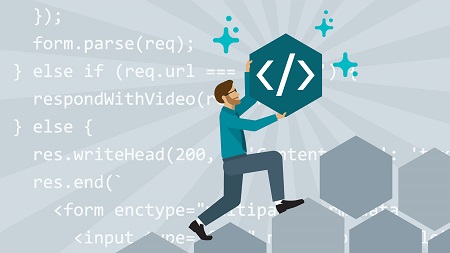English | MP4 | AVC 1280×720 | AAC 48KHz 2ch | 2h 03m | 460 MB
Learn advanced techniques for asynchronous programming and data streaming in Node.js. In this course, instructor Alex Banks shows how to use asynchronous patterns such as callbacks, promises, and async/await to manage processes and enforce sequential, parallel, and concurrent execution. He then reviews streams, a critical feature for reading and writing data from Node applications. He introduces the four different types of streams—readable, writeable, duplex, and transform—and shows how to minimize backpressure, or buildup, in data transmission. In the final section, Alex shows how to combine the techniques and build an HTTP server for streaming video over the web. Learn how to ensure the stream is cross-browser compatible and collect multipart/form-data, such as text data and files, from the upload stream. By the end of the course, you’ll have a powerful new toolset for building advanced, enterprise-scale applications with Node.js.
Topics include:
- Asynchronous patterns
- Resolving and rejecting promises
- Sequential, parallel, and concurrent execution
- Working with readable and writeable streams
- Transforming streams
- HTTP streaming
Table of Contents
Introduction
1 Welcome
2 What you should know
3 Using the exercise files
Asynchronous Patterns
4 Callback pattern
5 Resolving promises
6 Rejecting promises
7 The promisify function
8 Sequential execution
9 Sequential execution with async await
10 Parallel execution
11 Concurrent tasks
12 Logging concurrent tasks
Advanced Streams
13 Why streams
14 Readable streams
15 Using readable streams
16 Writable streams
17 Backpressure
18 Piping streams
19 Duplex streams
20 Transform streams
HTTP Streaming
21 Streaming to the browser
22 Handling range requests
23 Forking and uploading streams
24 Parsing multipart form-data
Conclusion
25 Next steps
Resolve the captcha to access the links!
